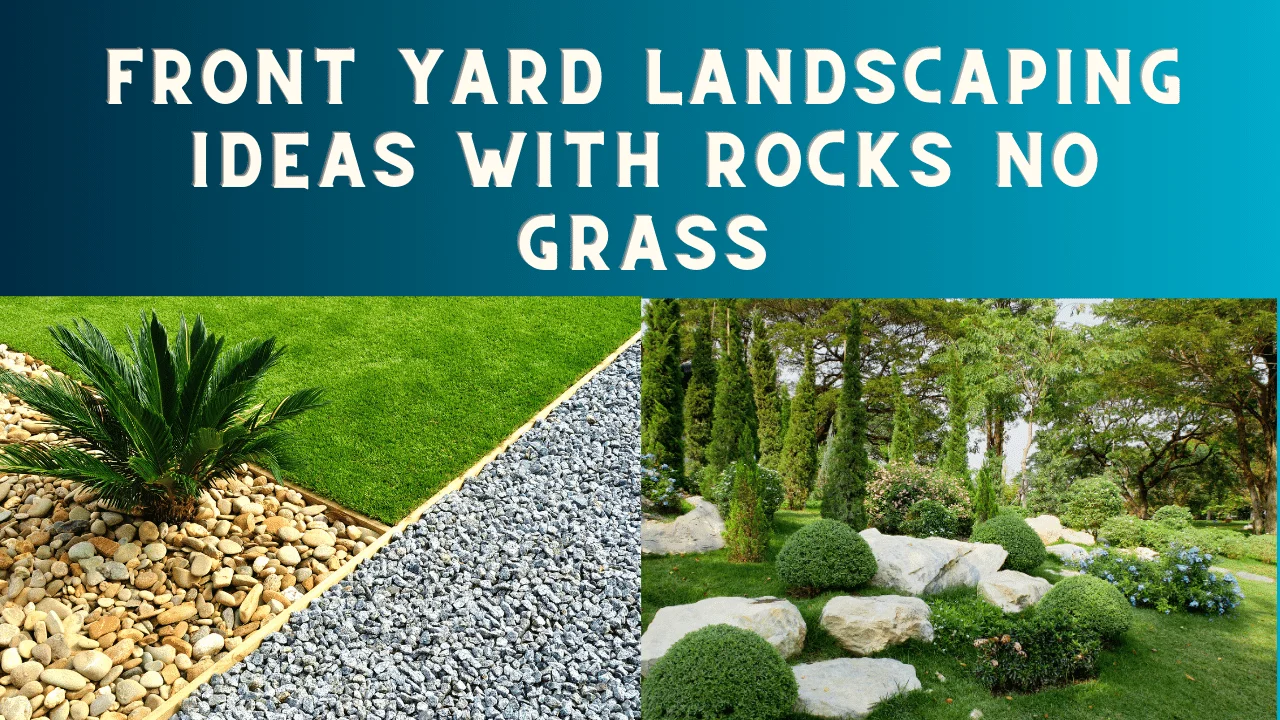For homeowners seeking low-maintenance and drought-resistant garden options, a front yard landscaped with rocks instead of grass is both aesthetically pleasing and functionally sound. Using a variety of rocks, this landscaping style creates a dynamic, multi-layered look that improves the visual attractiveness of any house. Incorporating rocks of varying sizes, shapes, and colors—from small gravel to large boulders—allows you to express your individuality and style while minimizing the impact on the environment.
Who Benefits from No-Grass Front Yard Landscapes?
Landscapes based on rocks are ideal for homeowners who want to lessen the amount of water they need to water their lawn, plant a garden that can withstand drought, or both. This method is also great for people who want to give their home a more modern or minimalist look. Furthermore, compared to conventional grassy lawns, rock gardens use far less water and chemical treatments, making them a great option for eco-conscious people.
Designing with Different Types of Rocks
Choosing the Right Rocks for Your Landscape
Choosing stones that are both aesthetically pleasing and functionally appropriate for the garden’s environment is the first step in creating a beautiful rock garden. You can make a variety of textures and contrasts by mixing and matching options like river rocks, pea gravel, and boulders. If you want your rocks to look well-balanced, you must think about their size and color.
Incorporating Boulders as Natural Art
In a rock garden, boulders make a bold visual statement. When positioned correctly, they can guide the eye’s path and bring a natural, earthy quality to the garden. When contrasted with more delicate landscaping features, such as mulch or small stones, boulders look spectacular in expansive front yards.
Using Gravel for Low-Maintenance Paths
Adding gravel pathways to the front yard is a great way to improve navigation while also giving it a lovely, rustic look. Depending on the style of your house and garden as a whole, these pathways can be either geometrically straight or more organically winding.
Creating Patterns with Pebble Mosaics
Simple walkways can be turned into breathtaking works of art with the help of pebble mosaics. Infuse your front yard with a touch of creativity and personal expression by creating these by arranging small pebbles in specific patterns or designs.
Combining Rocks with Native Plants
You can improve the aesthetic value of your landscape and do your part to preserve local biodiversity by planting native plants alongside rocks. Plants that are native to an area tend to need less water and attention than exotic species because they have evolved to thrive in that environment.
Strategies for Water Conservation
Implementing Drip Irrigation Systems
Putting in a drip irrigation system that hydrates plants from the soil up would be another great way to cut down on water waste. Since this technique reduces runoff and evaporation, it is more effective than conventional sprinklers.
Choosing Drought-Tolerant Plants
Choose plants that need very little water to flourish. Because they thrive in dry environments and look great against the rocky backdrop, succulents, cacti, and some perennial grasses are perfect for rock gardens.
Utilizing Mulch to Reduce Evaporation
If you want your rock garden to stay moist, mulch is a must-have. It improves soil moisture retention, inhibits weed growth, and gives the landscape an organic look.
Creating Shade with Strategic Plant Placement
One more way to cut down on water usage is to position taller plants or buildings so that they shade the soil and smaller, more delicate plants.
Regular Maintenance to Enhance Efficiency
If you want your rock garden to stay healthy and keep watering efficiently, you need to remove weeds, prune plants, and check and maintain your irrigation system often.
Enhancing Curb Appeal with Creative Rock Layouts
Layering Rocks for Depth and Texture
If you want your front yard to seem more three-dimensional, try layering rocks of varying sizes and colors. Start with bigger stones in the rear and work your way up to smaller ones in front. This method not only makes the yard look bigger, but it also adds texture and makes the eye follow the natural contours of the land.
Integrating Colorful Rock Varieties
In landscape design, color plays a significant role. To liven up the area and create a bold contrast with the darker tones of your home’s exterior or greenery, try incorporating colored rocks like white marble chips, blue river pebbles, or red lava rocks.
Using Rock Borders and Edging
In the garden, rock edging and borders are functional because they demarcate spaces, separate planting types, and outline pathways. For an elegant appearance, these borders can be made of precisely cut stones; for a more rustic one, they can be built from rocks with natural irregularities.
Sustainable Practices in Rock Landscaping
Choosing Eco-Friendly Materials
To lessen the toll that transportation takes on the environment, choose rocks and other materials that are close to home. Not only do local stones enhance the aesthetic of the native landscape, but they also help to reduce carbon footprint.
Reducing Chemical Use
Maintaining a more natural ecosystem is made easier with rock gardens because they reduce or eliminate the need for fertilizers and pesticides. You can naturally maintain a healthy garden by selecting plants that are resistant to pests and diseases.
Promoting Permeability with Rock Features
Some rock patterns, like loose gravel or spaced pavers, let water soak into the ground, in contrast to impermeable paved surfaces. Erosion and water contamination can be lessened as a result of reduced runoff and improved groundwater recharge.
Incorporating Recycled Materials
To spruce up your rock garden, think about adding some recycled glass or salvaged materials as accents. Using these materials instead of mined stones not only improves the landscape’s aesthetics, but also helps the environment.
FAQs
Q: What is the best type of rock for a low maintenance front yard?
A: Pea gravel and river rocks are excellent for low maintenance yards, offering durability and minimal upkeep.
Q: How often should I weed a rock garden?
A: Weeding a rock garden should be done as needed, typically once a month to keep it looking neat.
Q: Can I use rocks around existing trees?
A: Yes, rocks can be used around trees but keep them away from the base to avoid moisture retention and root rot.
Q: Are rock gardens suitable for all climate types?
A: Yes, rock gardens can be designed to suit various climates by selecting appropriate plants and rock types.
Q: How do I prevent rocks from sinking into the soil over time?
A: Use a landscaping fabric under the rocks to keep them from sinking and to prevent weed growth.
Also Read: Small Backyard Fire Pit Ideas Landscaping
Conclusion
Adding a rock-based landscape to your front yard is a win-win: it looks better, requires less upkeep, and helps the environment. You can design a beautiful and practical outdoor area by selecting the appropriate rocks, incorporating sustainable practices, and artistically arranging the elements. You can make your rock garden a symbol of sustainability and beauty by adopting this landscaping style, which shows that you value nature and want to keep it that way.

Shannon Reyes is a seasoned writer with a knack for crafting engaging blogs on a variety of service industries, including plumbing, cleansing, moving, pest control, and roofing. With a keen eye for detail and a passion for helping readers navigate complex topics, Shannon brings her expertise to life through informative and accessible content.











